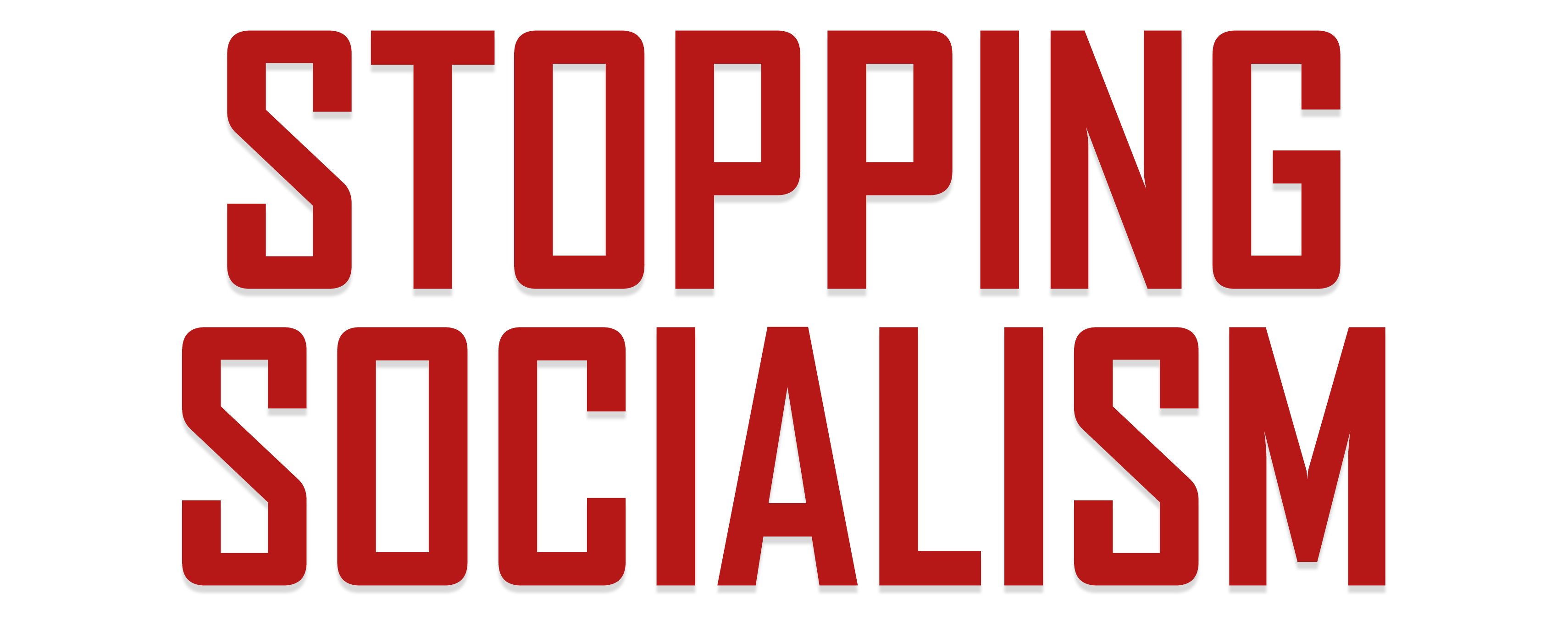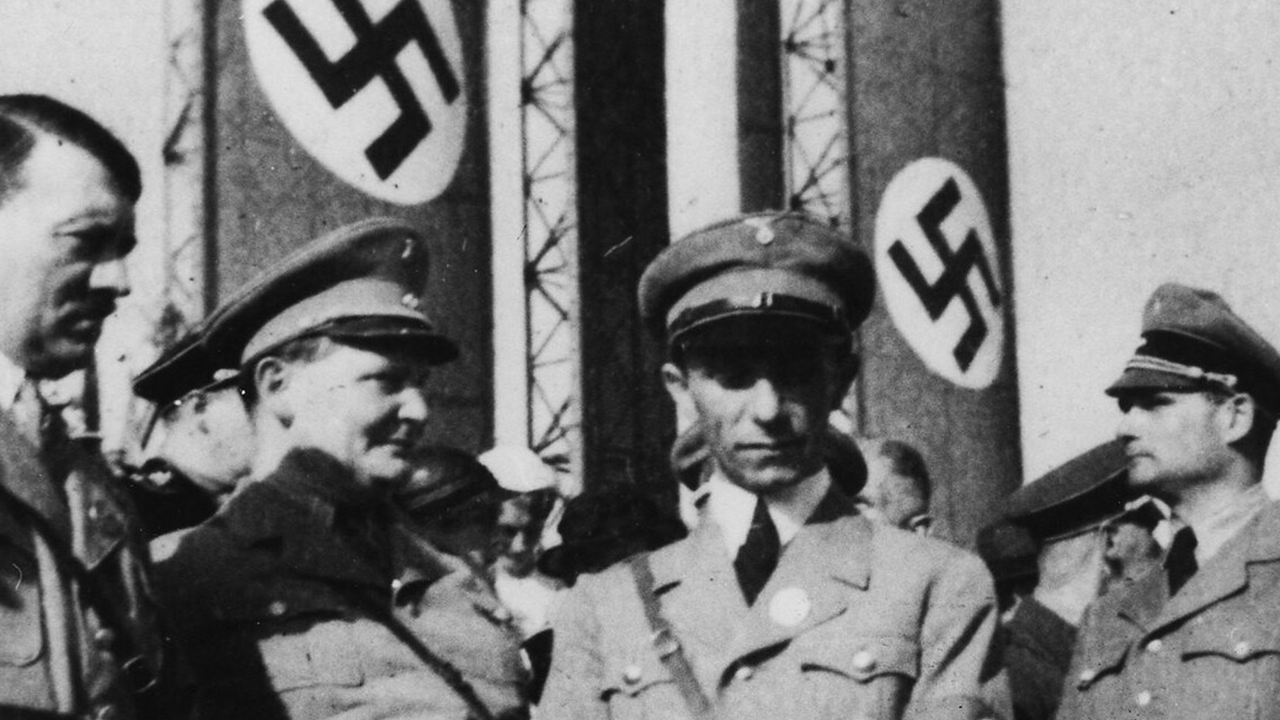In the last few years, many conservative commentators and political figures, including President Trump, have lashed out against extreme left-wing politicians and radical agitators as the “Fascist Left.” Many news media pundits scoffed at this phrase, incredulous at the thought that authoritarian and nationalistic socialists could ever exhibit leftist tendencies. However, many well-known historians would differ. These academicians have identified German National Socialists and Italian Fascists as close relatives to the revolutionary socialist Left. Why? Because Nazi and Fascist authority figures often proclaimed to be on the “Left” side of the political spectrum, embracing a slew of “revolutionary socialist policies.”
For instance, Joseph Goebbels and the Strasser brothers promoted worker-based class struggle, socialism, wealth redistribution, social justice, social welfare, anti-capitalism, the breakup of large estates, nationalization, and an alliance with Stalin’s Soviet Union. These National Socialist leaders were almost in complete alignment with the ideological thrust of Lenin and Stalin. Some historians refer to them as the comrade vanguard of the Nazi party’s left-wing faction. Others viewed Goebbels and the Strasser brothers as “National Bolsheviks.”
In stark comparison, right-wing elements of Europe instead gravitated towards the monarchy, church, and traditional values, which was an outright anathema to socialist left-wing elements. Hitler regarded right-wing elements as reactionary and bourgeois. According to the American historian David Schoenbaum, Hitler in 1935 proclaimed that “The enemies of National Socialism,” were not only the “Jewish Marxists” and “certain elements of an incorrigible, stupid reactionary bourgeoisie,” but also Catholics. Goebbels held similar views.
So, when did Goebbels come out of the left-wing closet? It was almost from day one. But his most famous quote, where he proudly acknowledged his support for the “German left” and his hated for the “right-wing” business class, occurred on Dec. 6, 1931. In that edition of his Der Angriff publication, Goebbels wrote, “According to the idea of the NSDAP [Nazi party], we are the German left. Nothing is more hateful to us than the right-wing national ownership block.” Here, Goebbels explicitly spelled out his true revolutionary red colors, confessing that the German National Socialist party belonged on the socialist “left” side of the political spectrum, comrades in arms who despised the capitalist right wing.
Goebbels’ left-wing identification was no secret to many German historians. They had already uncovered the Nazi’s left-wing and socialist orientation. And they, unlike other historians, were willing to reveal their dark secrets. Some, like German historian Wolfgang Venohr, made it a point to reveal Goebbels’ pro-left quote in his book Documents of German Existence: 500 Years of German National History 1445-1945. Other German historians echoed the same evidence about the socialist leftist movement of Hitler’s National Socialist party. In 2011, Prof. Arnulf Baring reminded listeners during a TV broadcast, “The Nazis were not right-wing, the Nazis were a left-wing party! National-socialist!” The German historian Götz Aly concurred, writing, “Another source of the Nazi Party’s popularity was its liberal borrowing from the intellectual tradition of the socialist left. Many of the men who would become the movement’s leaders had been involved in communist and socialist circles.” This included Hitler, who fervently declared himself a “fanatical socialist” in 1941.
Some non-German historians were also privy to the Nazis socialist, left-wing history and ideology. UC Berkeley political scientist, A. James Gregor, a leading expert on Fascism, claimed that “Fascists were almost all Marxists—serious theorists who had long been identified with Italy’s intelligentsia of the Left.” The French historian, François Furet, a former communist intellectual himself, argued, “It was in Nazi Germany that Bolshevism was perfected.” American historian Stanley G. Payne weighed in with “Hitlerian socialism more nearly paralleled Russian Communism than any other non-communist system.” The American leader of the Socialist Party of America, Norman Thomas, who ran for U.S. president many times, condemned the Soviet Union in the 1940s as exhibiting “Red fascism.” His exact words were, “communism, whatever it was originally, is today Red fascism.” And we cannot leave out the national ‘newspaper of record”, The New York Times, which in its 1939 editorial stated: “Hitlerism is brown communism, Stalinism is red fascism.”
Even hardcore Marxists could not help but equate Fascism with Stalinism. The German Communist Otto Ruhle, declared that “Fascism is merely a copy of Bolshevism.” Even Leon Trotsky, the Russian Marxist who headed the Red Army, pointed out the same comparison, writing in 1936, “Stalinism and fascism, in spite of a deep difference in social foundations, are symmetrical phenomena. In many of their features they show a deadly similarity.”
Goebbels not only promoted the Nazi party as an offshoot of the German left branch. He spent time and energy proving it. In 1925, as a budding regional Nazi orator who spoke to crowds of thousands, he repeatedly praised Lenin and encouraged the Nazi leadership to ally with Stalin’s Soviet Union. By late November of 1925, his views finally made national headlines. As reported by The New York Times, Goebbels declared, “Lenin was the greatest man, second only to Hitler, and that the difference between Communism and the Hitler faith was very slight.” But Goebbels was eager to show off his Marxian catechism as well. In 1925 he wrote, “We will turn National Socialism into a party of class struggle,” a major requirement for a full-fledged leftist with Marxian credential. He even spoke up for “strict social justice.” Then again, such extreme left-wing bravado would be expected from a political war-horse who professed in 1924 to be a “German Communist.”
Such leftwing grit and grime resonated throughout Goebbels’ political career. In 1929, he referred to Nazi Germany as “a party of “revolutionary socialists.” By 1939, he promulgated the narrative that World War II was a bitter battle between capitalism and socialism, declaring, “England is a capitalist democracy. Germany is a socialist people’s state” in his famous “England’s Guilt” speech. Apparently, Hitler agreed with his close friend. Bragging about his military successes in Western Europe in 1941, Hitler declared, “It is already war history how the German armies defeated the legions of capitalism and plutocracy.”
Joseph Goebbels was no minor figure in the upper echelons of the Nazi party. He was not only the Propaganda Minister of Nazi Germany, but also one of Hitler’s closest and most devoted associates. And achieving success in that role, he climbed the Nazi ladder to be the only other man to serve as Chancellor of Nazi Germany.
Goebbels’ secret was simple. He was a fanatical political extremist to the core, prepared to die for his cause, declaring that it was “better to go down with Bolshevism than live in eternal capitalist servitude.” Goebbels’s socialist and anti-capitalist dreams of collective sacrifice inspired the German public. “To be a socialist,” Goebbels wrote, “is to submit the I to the thou; socialism is sacrificing the individual to the whole.” And sacrifice they did.
So, what about the Italian Fascists? Benito Mussolini made it clear that he believed that Fascism sat firmly on the “Left.” He was a diehard Marxist for much of his life, considering himself a disciple of his friend, Vladimir Lenin. The English historian Denis Mack Smith concurred, writing, “Mussolini had once belonged to the Bolshevik wing of the Italian Socialist Party and still in 1924 confessed admiration for Lenin.” In his famous 1933 “Doctrine of Fascism”, Il Duce made it crystal clear, writing, “It may be expected that this will be a century of authority, a century of the Left, a century of Fascism.” This quote comes from Mussolini’s 1933 “authorized translation” by Jane Soames, an accomplished journalist and translator for The Times of London.
As a flaming atheist who declared, “Christ is dead and his teachings moribund,” and who opposed monarchism, Mussolini never considered himself part of the reactionary right. In Russia Under the Bolshevik Regime, Polish-born American historian Richard Pipe puts the history of Mussolini’s Fascism into perspective, asserting, “Genetically, Fascism issued from the ‘Bolshevik’ wing of Italian socialism, not from any conservative ideology or movement.”
The American historian Charles F. Delzell knew this instinctively. He wrote in Mediterranean Fascism 1919-1945, “A good many Fascists… came from the ranks of left-wing Marxism and syndicalism, and when the Fascist regime was overthrown in 1943-45 it was not hard for a certain number of ex-Blackshirts to swing to left-wing political extremism.”
In fact, the Fascist-left radicals for Mussolini’s regime were so in tune with Marxist ideology and violent tactics that it is difficult to see much difference between them and the American Antifa radicals. Because of their similarities, the current crop of Antifa agitators are unabashed imitators of Mussolini’s blackshirt violence and revolutionary socialism. Moreover, the reason Antifa is part of the Fascist left is that historically Fascism originally came out of Marxism. Who have made those claims? Many historians, including two of the world-leading experts on Fascism, Zeev Sternhell and A. James Gregor. A Polish-born Israeli historian, Sternhell wrote, “Fascist ideology… was the direct result of very specific revision of Marxism,” while UC Berkeley political scientist, Gregor, has a slightly different take, arguing that “Fascism was a variant of classical Marxism.” David Ramsey Steel, a former member of the Socialist Party of Great Britain, explained it most succinctly: “Fascism began as a revision of Marxism by Marxists.”
Mussolini was never sly about revealing his communist roots. In a 1932 interview with Emil Ludwig, Mussolini eagerly attesting, “It was inevitable that I should become a Socialist ultra, a Blanquist, indeed a communist. I carried about a medallion with Marx’s head on it in my pocket.” After winning a legislative seat in Italy’s Chamber of Deputies in1921, Mussolini spoke with pride, “I know the Communists. I know them because some of them are my children.” He was also overjoyed in 1934 when he announced that Italy’s economy had been mostly nationalized-socialized, boasting, “Three-fourths of the Italian economy, industrial and agricultural, is in the hands of the state.” Mussolini was celebrating the public ownership of the economy, the main hallmark of Marxist socialism.
Who else referred to Italy’s Fascists as the “Fascist Left?” One is the American historian Stanley G. Payne in his A History of Fascism, 1914–1945, who employed the term “Fascist left” to describe a number of major Fascist leaders in Italy, including Edmondo Rossoni, Michele Bianchi, Angelo Oliviero Olivetti and others. Many of these “Fascist Syndicalists,” favored “class consciousness,” “labor’s autonomy” and heavy doses of socialism and unionism. By 1923, Italian industrialists were so horrified by the Fascist syndicalists (unionists), that they wondered whether it was “now wise to pay the Communists to fight the Fascists!” As leader of the Fascist Syndicalists, Rossoni instigated hostile strikes in his effort to eventually abolish capitalism. He demanded workers’ control of factories, “class consciousness,” and believed that “only the Fascist syndicates could complete the revolution.” Rossoni was famous for depicting Italy industrialists as “vampires” and “profiteers.”
So why is there a general belief that German National Socialism and Italian Fascism rest on the right? After all, according to the French Revolution’s sitting arrangement in 1789, authoritarians sat on the right while the classical liberals, like Thomas Paine, sat on the left. It was because of Soviet propaganda during and after World War II. The Russian Soviets, embarrassed by their cozy corroboration with Hitler and Mussolini, decided to conceal their striking Fascist-Marxist similarities. They prohibited communists and their sympathizers from using the term “National Socialist” in public or in media outlets. They organized massive disinformation media campaigns to convince the world that Fascism and Communism were polar opposites, devoid of any common traits. Of course, it was all a big propaganda lie worthy of the myth-making Pravda.
When the worldwide disinformation effort by Soviet Russia started to gain traction in the 1940s, Winston Churchill was flabbergasted at the news. Churchill, a historian in his own right, clearly saw the glaring parallels between Nazism and Communism, commenting that, “As Fascism sprang from Communism, so Nazism developed from Fascism.” When Churchill was confronted by Soviet propaganda to falsely depict the world’s two major totalitarian ideologies as polar opposites, he remarked to his son, “Fascism and Communism… Polar opposites—no, polar the same!”
L. K. Samuels [send him mail] is the author of Killing History: The False Left-Right Political Spectrum and the Battle Between the “Free Left” and the “Statist Left” (2019) and other books. See his website.






